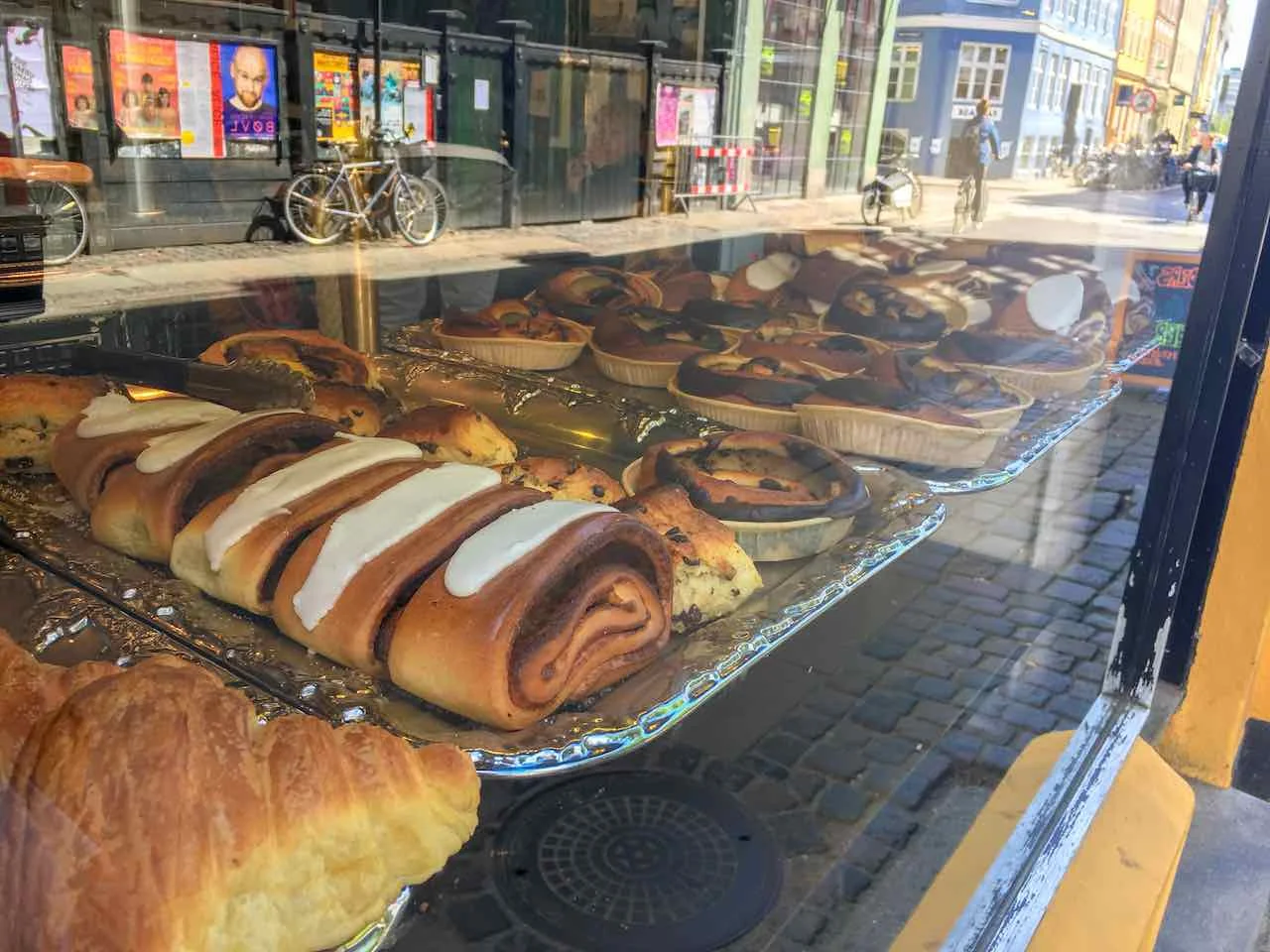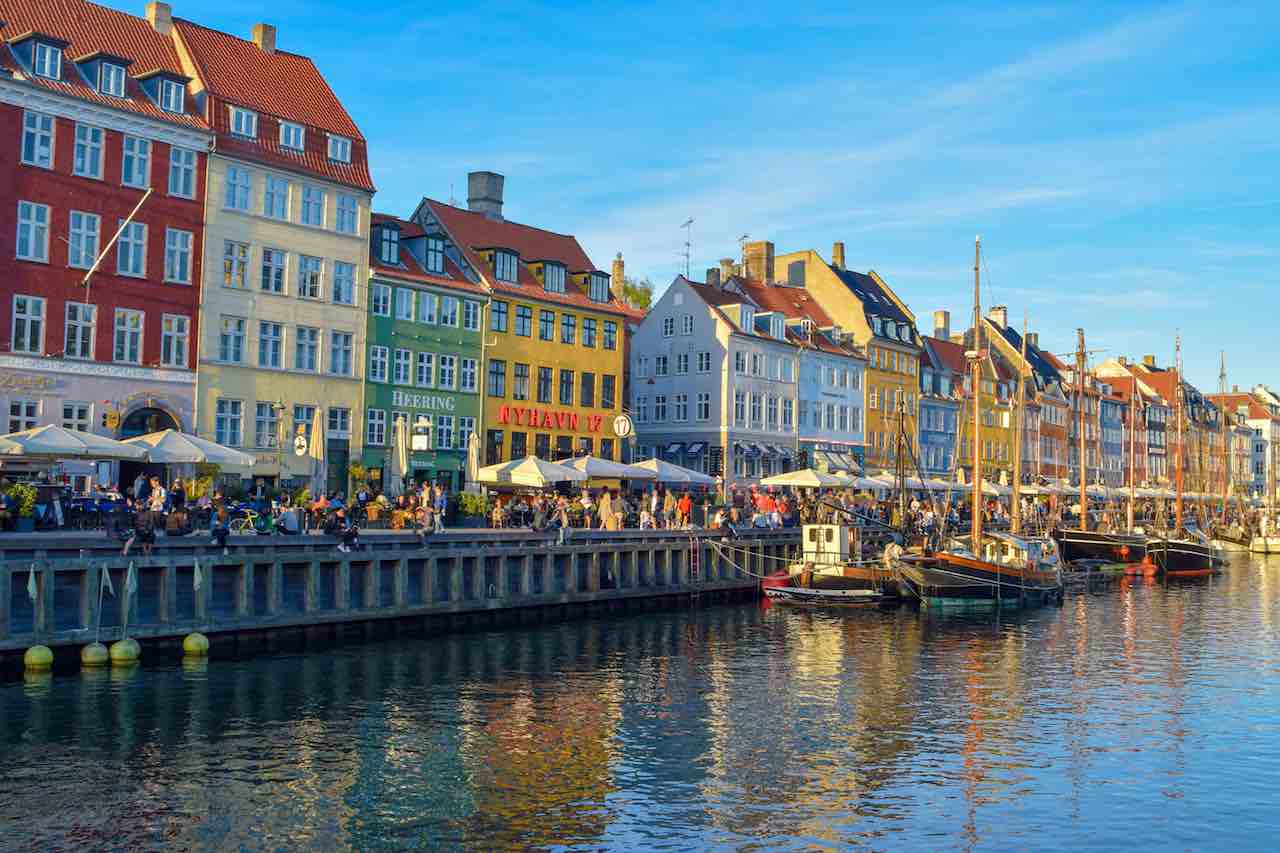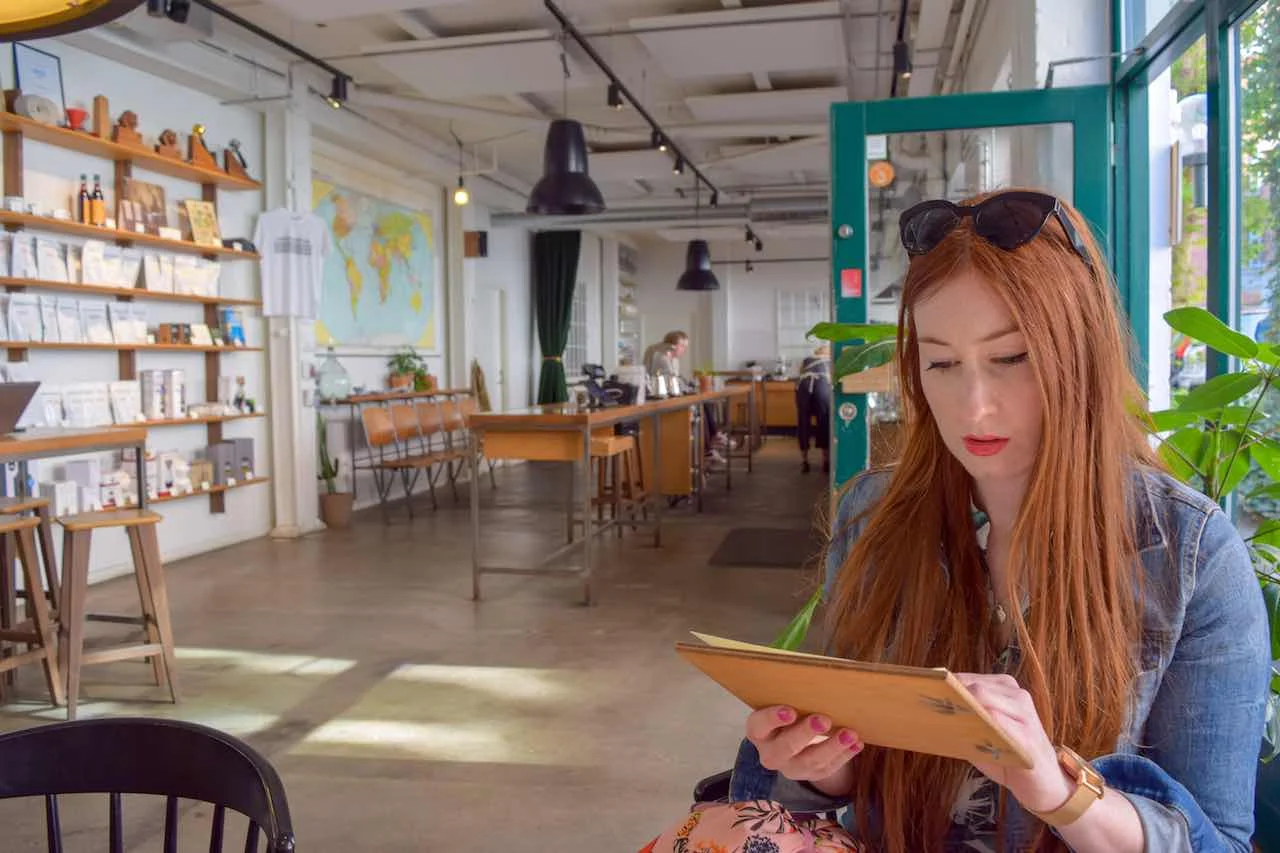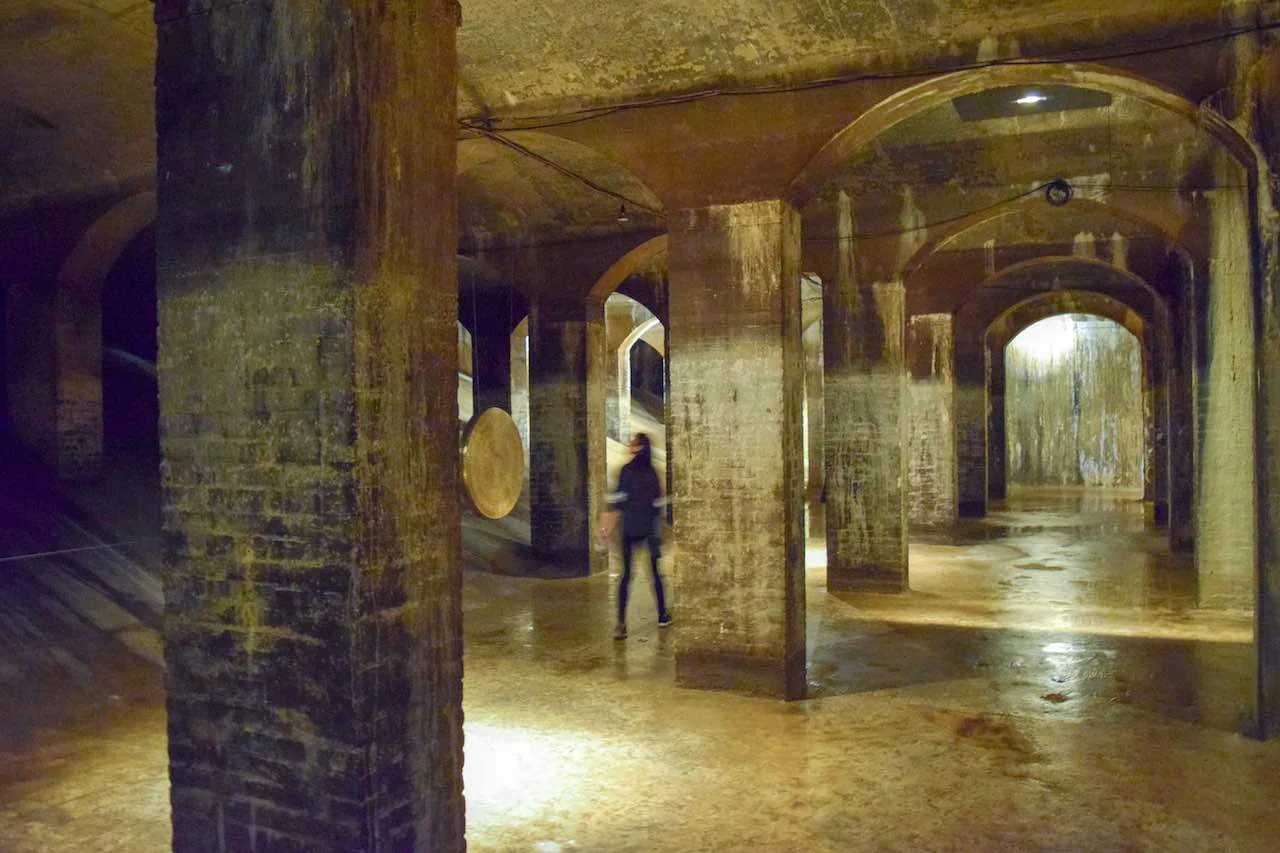The ultimate Copenhagen travel guide
Years ago I spent a blissful week in Copenhagen. I was staying with an Australian friend who was working there for a few months, so during the weekdays while he was at work I hopped on my hire bike and saw Copenhagen the way the locals do: by cycling around it. Copenhagen is the epitome of Scandinavia – it’s impossibly cool, clean and so jam packed with beautiful design that you’ll go home with myriad plans to redecorate your place – which may or may not materialise.
Despite that wonderful week, during the years since, I had avoided visiting Copenhagen again – though purely due to the cost. Copenhagen regularly ranks in the top 10 most expensive cities in the world, and because I travel so much I tend to go to places where I can get more bang for my buck. But thanks to cheap flights and a yearning for ‘hygge’, I finally took the plunge and revisited my favourite Scandi city. And honestly, it was ever better than I remembered and not as expensive... if you do your homework. Which I did and I'm happy to share. Read on my friends for the perfect Copenhagn city guide.
Does a trip to Copenhagen have to be expensive?
A trip to Copenhagen will never be cheap, but it doesn't have to be super expensive. To keep prices low, okay well not quite low, but to at least stop them from becoming astronomical, I did a lot of planning for this trip, which I want to share below.
If you're budget conscious, but want to see a lot, my top tip is to buy the Copenhagen Card. If you buy the Copenhagen Card, it covers all the activities and transport below, except for the restaurants/cafes and the train to Malmö, Sweden. This means once you’ve got it in your hand – the majority of the itinerary below is ‘free’. A three-day card is €93 and will save you more than €100 if you follow this itinerary. That's a pretty good saving if you ask me, plus the fixed cost makes it easier to budget.
One of the biggest pluses for me is that the card covered all travel including to and from the airport and north of Copenhagen to two of my favourite Danish destinations: Hamlet's castle and the Louisiana Modern Art Museum. So if you can make it to those (and if you can't extend your trip so you can), again the card seems to make sense from a savings point of view.
Tip: Food in Copenhagen is expensive so if you're on a tight budget, skip the restaurants and cafes mentioned below. You can fill up cheaply and easily on pastries and hotdogs from the street stands you'll see everywhere in Copenhagen. Healthy, no? But delicious, yes (plus you're on holiday right?).
A city guide: 3 days in Copenhagen
Day One:
1. A cheap brekky from Sankt Peder's Bakery
Considering the Danish made a pastry so good it's named after them, it makes sense that your first stop in Copenhagen should be at one of its oldest and best known bakeries Sankt Peder's for the local favourite; a sticky cinnamon roll (called ‘onsdagssnegle’ in Danish). If you don’t like cinnamon, they have plenty of other reasonably priced baked goods. Another favourite of mine was the tibirkes, which is a poppy seed roll.
2. Get your bearings by heading to the top of the Round Tower
Copenhagen’s Rundetaarn – or round tower – is the oldest functioning observatory in Europe, which my nerdy side finds quite cool. It’s also a great spot to get your bearings without climbing any stairs, although you will have to walk 209 metres upwards in a spiral to get just 36 metres above the ground. Luckily 36 metres is enough to provide stunning panoramic views of the entire city.
For more information, see: The Round Tower
3. Go back in time at Rosenborg Castle
Rosenborg’s well-preserved rooms and nifty smartphone tour guide app, will teach you a lot about Denmark’s somewhat scandal laden royal past. Over the years, more than one affair has rocked the Danish royals, but the most interesting was Queen Caroline Mathilde’s affair with her insane King husband’s physician who ended up ruling the country for two years while the King was too unwell. It’s fascinating stuff and has even been made into a movie called A Royal Affair. But, the best thing about Rosenborg Castle? It houses the must-see Danish Crown Jewels. For more information, see Rosenborg Castle
4. Glimpse the city from its Canals
An hour-long boat tour of Copenhagen’s canals is touristy yes, but it must be done in my opinion as it's a great way to see the city and get your bearings. They provide earphones so you can hear fun facts while you're on the boat and you can buy a drink before you get on if you're that way inclined.
5. See the colourful and iconic houses Nyhavn
There’s a good chance you’ve seen one, if not many, photos of Copenhagen’s best-known waterfront, Nyhavn. The colourful houses perched along the canal are the personification of city – featuring in most articles about Copenhagen and Denmark in general. A fun fact is that Hans Christian Andersen, who of course wrote famous fairytales The Little Mermaid and The Ugly Duckling, once lived in two different houses along Nyhavn.
Tip: There are plenty of bars and restaurants along this strip but due to its location, these tend to be pricey. To enjoy Nyhavn without a price tag, head to one of the many nearby supermarkets (such as the ALDI on Gothersgade street, which is exceptionally cheap by local standards) and pick up some snacks and drinks – you can legally drink alcohol on the street in Denmark – and perch yourself along the edge of the water. The best time to head there is at golden hour, when the sun hits the buildings, further enhancing their rainbow of colours.
For more information, see Nyhavn
6. Discover a different side of Copenhagen at Christiana
To me, Christiana is proof that if Copenhagen had a star sign it’d be Gemini. Clean, sensible and responsible Copenhagen is the last place where I’d imagine you’d find a hippy commune in the middle of the city. But of course that’s basically what the infamous, self-proclaimed autonomous anarchist district of Christiana is. The story of Christiana is quite interesting – it was founded in the early 1970s when a group of people began squatting on an old military barracks. Today about 1000 people still live there, although these days it's not rent free: a few years ago they came to an agreement where the state now owns and leases the buildings on the land.
If you haven’t been, I would recommend dropping in to Christiana just to experience it, but I wouldn’t stay long and I wouldn’t go there with children. There are some rules that you should also follow, such as not taking photos. Look out for the list of 'do's and don'ts' at the entrance.
That said, I’ve been to Christiana a few times and I’ve felt safe the whole time, so don’t let the above scare you!
For more information, see: Christiana Freetown
7. Climb the spire church for the best views of Copenhagen
I think of it as a the spire church but in reality it's called Church of Our Saviour. But whatever you want to call it, this unique church provides the best views of Copenhagen if you ask me, so I would definitely recommended heading up to take in the views – if you’re not too afraid of heights!
For more information, see: Vor Frelsers Kirke
8. Check out the bog bodies at the National Museum
While I wouldn’t spend too long in this museum if you’re on a tight schedule, I think it’s well worth popping in to see the extraordinarily preserved bog bodies. These are essentially mummies that were accidentally preserved as they were sacrificed in bogs 1000s of years ago.
For more information, see: The National Museum of Denmark
9. Spend the evening at Tivoli Amusement Park
For a spot of magic in Copenhagen, visit the city’s beloved Tivoli Gardens. Tivoli is one of the oldest amusement parks in the world and boasts the third oldest rollercoaster on Earth. But it’s more than an average theme park; it’s far more genuine and tasteful – think Disneyland before it was a global brand. Think a magical wonderland, with open-air stage performances on Friday nights, carnival games and rides, gardens full of colourful flowers, fairy floss, hotdogs, popcorn, beer and Danes of all ages enjoying themselves.
Tivoli has the ability to charm anybody who visits, and in my opinion a trip to Copenhagen is incomplete without stopping by here. If you can, go on a Friday or Saturday night in summer where you can catch a show or fireworks.
For more information, see: Tivoli Gardens
Day Two:
10. Wake up with the perfect brew at Coffee Collective
The Frederiksberg’s Coffee Collective is my favourite coffee shop in Copenhagen. They’re serious about their coffee and have delicious but simple pastries and toasts to go with it, while you sit and watch the coffee being roasted behind a massive glass window into their factory. While I usually wouldn’t recommend a chain, and it doesn’t feel like one, the Coffee Collective cafes are dotted around the city so you should be able to easily find one close to where you’re staying.
For more information, see: Coffee Collective
11. Go underground to see the cistern exhibition
Copenhagen’s cisterns were a great little find that I missed the first time I was in the city. Located in the green and leafy Søndermarken Park, the cisterns were formally an underground water reservoir that has since been turned into a pretty unique (and yes a little damp!) exhibition centre.
The current exhibition In Is The Only Way Out plays with the senses using fire, mirrors, sounds and floating objects. It runs until November this year.
While you’re down there, make sure you read the information on the walls near the entrance about the history of the cisterns, which is pretty fascinating.
For more information, see: Copenhagen Cisterns
12. Explore the pristine royal reception rooms Christianborg Palace
One thing that I’ve always noticed about Danish castles and palaces is that they’re well looked after. You know how some castles and palaces are dusty, making them downright creepy? Well not Danish ones. And Christianborg Palace is my favourite of Copenhagen’s collection of well looked after palaces. Here you can see the stunning royal reception rooms, the kitchens, the royal stables and ruins of the castle from two fires – yup it’s burnt down twice in the past.
You can either get a joint ticket to see all the above but it’s also all included in the price of the Copenhagen Card so if you have that it’s free.
Tip: It’s completely free to go up to the top of the tower at Christianborg Palace, so if you’re on a tight budget, this is a great spot to see the city from above.
For more information, see: Christianborg Palace
13. Eat traditional smørrebrød at Aamanns Deli
Eating smørrebrød at least once while you’re in Copenhagen is a must and I’m being unoriginal here as this is one of the most popular spots to try it. Order the lunch special and wash it down with traditional schnapps.
For more information, see: Aamanns Deli
14. See where the royals live at Amalienborg Palace
A little bit of trivia if you’re not Australian, because any Australian that doesn’t know this has been living under a rock for the past 20 years – the crown princess of Denmark is an Aussie. And this is her house… all I can say is real estate goals. But because Amalienborg is where the royals live today, visitors can only access a small part of the palace, which is a bit of a shame. Still, Amalienborg is a great place to visit if you’re interested in the history of the royal family. You'll also get to see this great name map which confirmed my suspicions about the royal family – basically every Danish king since forever has been either called Frederik or Christian.
Tip: If you walk down towards the water from the palace you can get some beautiful photos of Frederik's Church with the nearby fountains in the foreground.
For more information, see: Amalienborg Palace
15. Spend an afternoon in Design Museum
Is it furniture or is it art? I guess you could argue in Denmark it’s both. Spend an hour or two here, walking through the lit up hall of chairs, taking a selfie in the mirror chair and soaking up the minimalistic, colourful and fun vibes that make Scandi design so perfect.
For more information, see: Design Museum Denmark
16. Head to Sweden for dinner
To me there is something irresistible about being able to jump on a train and be in another country in 20 minutes. So despite that I’ve been to Malmö before and was somewhat underwhelmed by things to do, I knew I wouldn’t be able to resist returning.
But this time I was prepared: I booked dinner at an amazing restaurant called Bastard, which was the perfect way to spend a night in Malmö. As the names hints, Bastard has a pretty hipster vibe about it, but in an unpretentious way and for an atmospheric restaurant, with delectable food and fun service in an expensive country like Sweden it was surprisingly inexpensive. Yes if you're trying to be cheap, you'll blow your budget so skip this, but if you're happy to treat yourself on holiday and spend a pretty reasonable $140 USD (£110, €125) between two people for 4 courses and dessert and a few drinks each, then absolutely make the trip over to Malmö to eat here. You won't regret it.
At Bastard, the menu changes nighty and is based on quirky sharing plates made from locally sourced, fresh ingredients. We had a range of food but the burrata with fresh Swedish herbs and steak tartare were the standouts for me – and the latter says a lot considering I was a vegetarian for 13 years. The only downside was out of the dessert menu of about five or six things, the two we wanted had all run out by about 9pm. When we were informed of this, we chose something else that we found out had also run out. Heartbreaking! But the waiter managed to wipe the horrified look off my face with some free dessert wine and hey our fourth choice dessert, which was an ice cream sandwich, was delicious so I can’t complain.
Tip: Trains run between Copenhagen and Malmö on a regular basis day and night. The journey is about 25 minutes in total. You can buy your tickets at Copenhagen airport or the train station you're leaving from. Return tickets cost around $22 USD (£18, €20).
For more information, see: Bastard Malmö
Day Three:
Day trips from Copenhagen
One of the best things about visiting Copenhagen is how easy it is to get outside the city on public transport and see some of the Danish seaside. If you’re heading to Copenhagen for more than two days, I’d highly recommended making a day trip from Copenhagen to see Kronborg Castle and the Louisiana Museum of Modern Art. You can easily see both in one day and it’ll save you at least an hour of transport if you do. If you decide to visit these, I’d again recommend the Copenhagen Card as it covers travel and entry to both these destinations so all you need to do is look up the train timetable and jump on the right one. But first, breakfast.
17. Breakfast at Grød: the world’s first porridge cafe
Before catching the train up north, I’d recommend heading to Grød for breakfast. Grød is a prorridge café that basically only sells – you guessed it – porridge. It’s a really fun and delicious place to have brekky, but if you’re a beginner like me, I’d recommend ordering the small bowl. I got the large and didn’t come close to finishing it despite generally struggling with an inability to fill myself up.
For more information, see: Grød
18. To go or not to go to Denmark’s Hamlet Castle
Excuse the very intended pun in this heading. Kronborg is about a 40-minute train ride north of Copenhagen and is famous for being the castle in Shakespeare’s Hamlet. Interestingly, despite there being no record of Shakespeare ever visiting Denmark, he described the castle perfectly, down to the flagpole in the courtyard where’s Hamlet sees his father’s ghost.
The castle’s setting couldn’t be lovelier; it’s by the Danish seaside, a stone’s throw from Sweden as this is where geographically the countries come closest to touching. Historically its strategic position was lucrative for the Danes as it allowed them to collect money from any ships passing through the Sound (the water strait which forms the Danish–Swedish border).
For more information, see: Kronborg Castle
19. Check out the cool and quirky at Louisiana
Louisiana museum is another little gem tucked away north of Copenhagen by the seaside, making it a perfect place to spend an afternoon after a morning at Kronburg Castle.
To me, Louisiana is much more than just an art museum or gallery – it’s also celebration of Danish architecture and landscape. You’re not just there for the art – you’re there for the atmosphere that comes from a building carefully and specifically designed for the purpose of displaying art. It’s just perfect.
For more information, see: Louisiana
Where should you stay in Copenhagen?
Accommodation in Copenhagen is expensive, so I would advise booking well ahead of your trip. Both times I’ve been to Copenhagen, I’ve stayed in an Airbnb in Frederiksberg, which on a map looks a little bit far out but it’s not at all. It’s a great place to stay, but so are many other suburbs in Copenhagen. Since Copenhagen has great public transport, I’d recommend not worrying too much about location, but instead focusing on staying somewhere where you’re nearby a metro, bus or train stop that goes into the city. Most sightseeing in this itinerary is within walking distance of Nørrebro Station, so if you’re on a train line that stops there, you’re sorted.












































